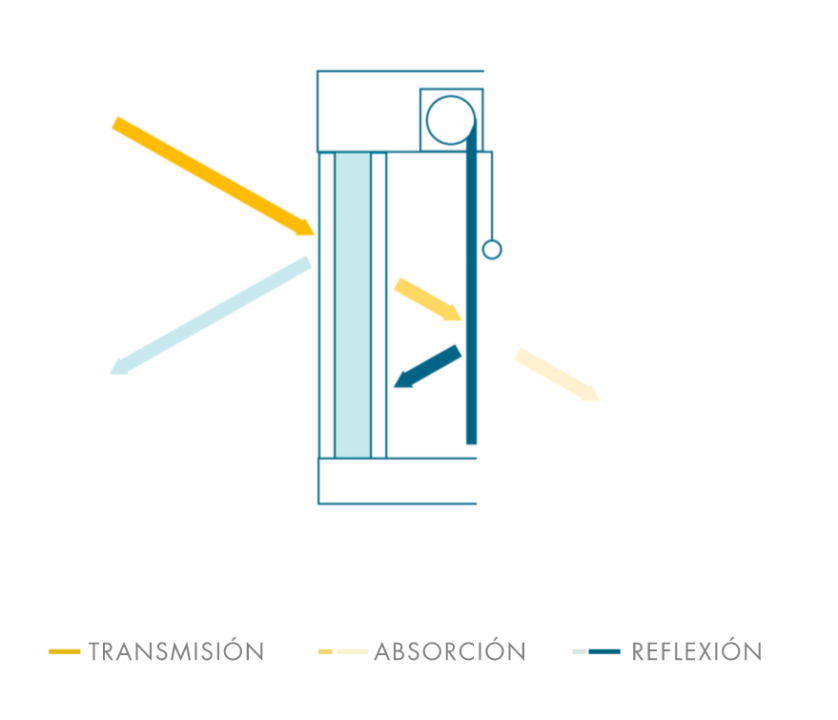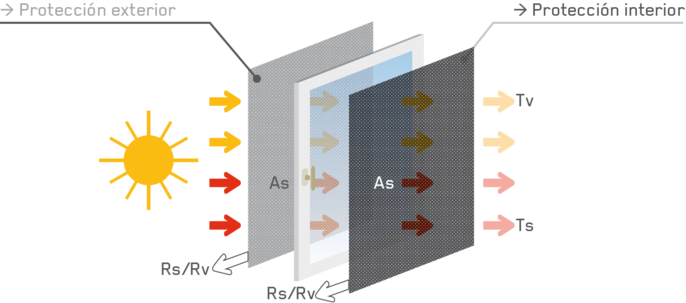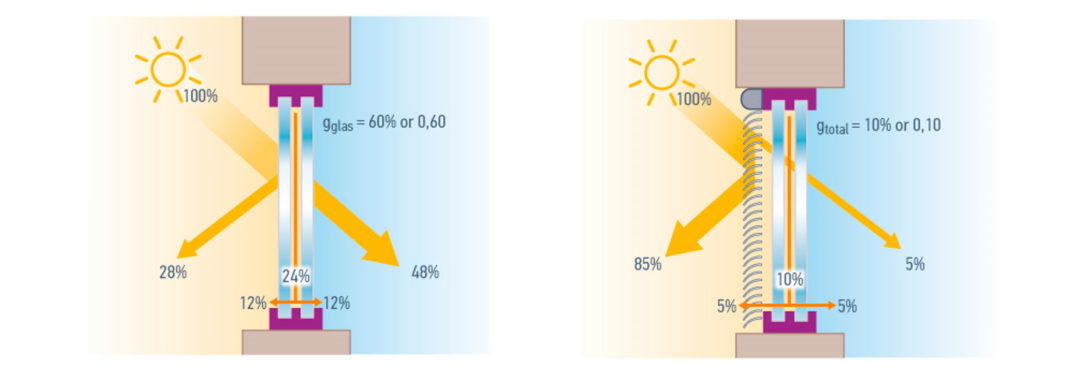How do you measure the impact of sunlight?
When the light hits a surface, a part of it goes through (transmission) the existing materials (whether a glass surface or a shade). Another part is reflected to the outside (reflection), and the rest of the light is absorbed in the fabric and finally radiates in the form of heat (absorption).
These parameters are measured using the following indexes: Ts = solar transmission factor Rs = solar reflection factor As = solar absorption factor

The intensity of this lighting, which can be reduced by using sun protection systems, has a direct effect on the comfort of the users: health, vision, well-being, safety and job performance. Moreover, effective control of natural light is a significant factor for energy savings and sustainable and long-lasting construction.
SOLAR FACTOR GTOT
The solar factor gtot (g┴) is the quotient between the solar radiation at normal incidence that is introduced into the building through the glass and that that would be introduced if the glass were replaced by a perfectly transparent gap.
To determine the total solar factor, two calculation rules are used:
- EN 13363-1 – or simplified method – calculates approximate values of total solar energy transmission (gtot) of a solar protection device combined with glazing. For this method, the values used are the integrated data (solar, optical and thermal parameters) of the glazing and the sun protection device. The calculation process is straightforward and can easily be executed using a spreadsheet. The results are generally higher (up to 0.1) than the more precise values obtained using the EN 13363-2 method.
- EN 13363-2 – or detailed calculation method – calculates more precise values for the total solar energy transmission (gtot) of a sun protection device combined with glazing. This calculation is based on the spectral transmission and reflection values of the sun protection device combined with the glazing. It requires specialised software to solve non-linear equation systems. The results of this calculation according to EN 13363-2 can be used as input for cooling load calculations.

DYNAMIC SUN PROTECTION
Impact on energy savings
Dynamic sun protection systems have an impact on different factors, which reduces the energy consumption of the building.

Windows on a facade are the weakest point in terms of energy transmission, in both directions. Although modern glazing has evolved at an impressive rate, it still cannot offer us the dynamic values of g, U and LT that we need in order to satisfy the needs that change throughout the year and thus be able to optimise indoor environmental conditions and energy efficiency.
The only way to achieve this is to apply an intelligent combination of certain basic functions to the building: dynamic sun protection, an adequate choice of glass type and lighting, cooling and heating systems with motion sensors. Science proved this years ago and now the market is demanding it. In the sun protection industry, the key to success lies in the way it is controlled.


